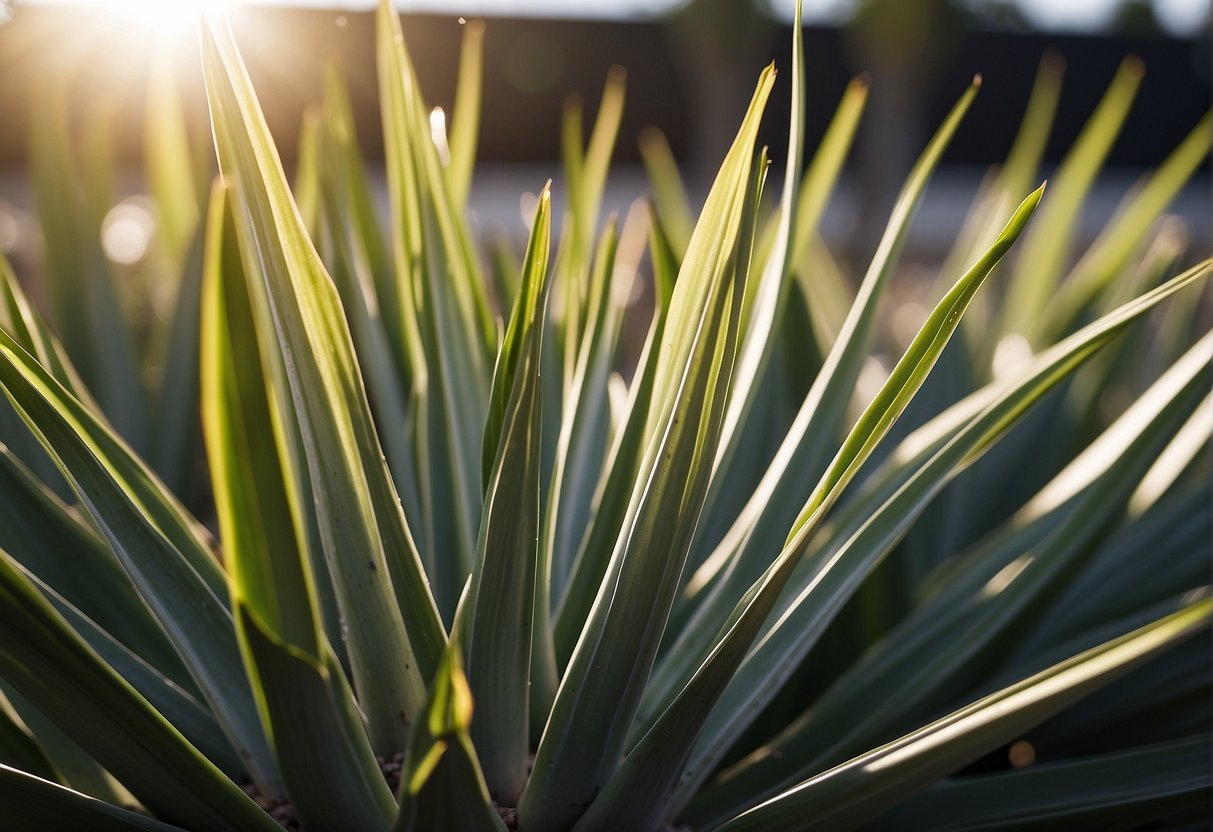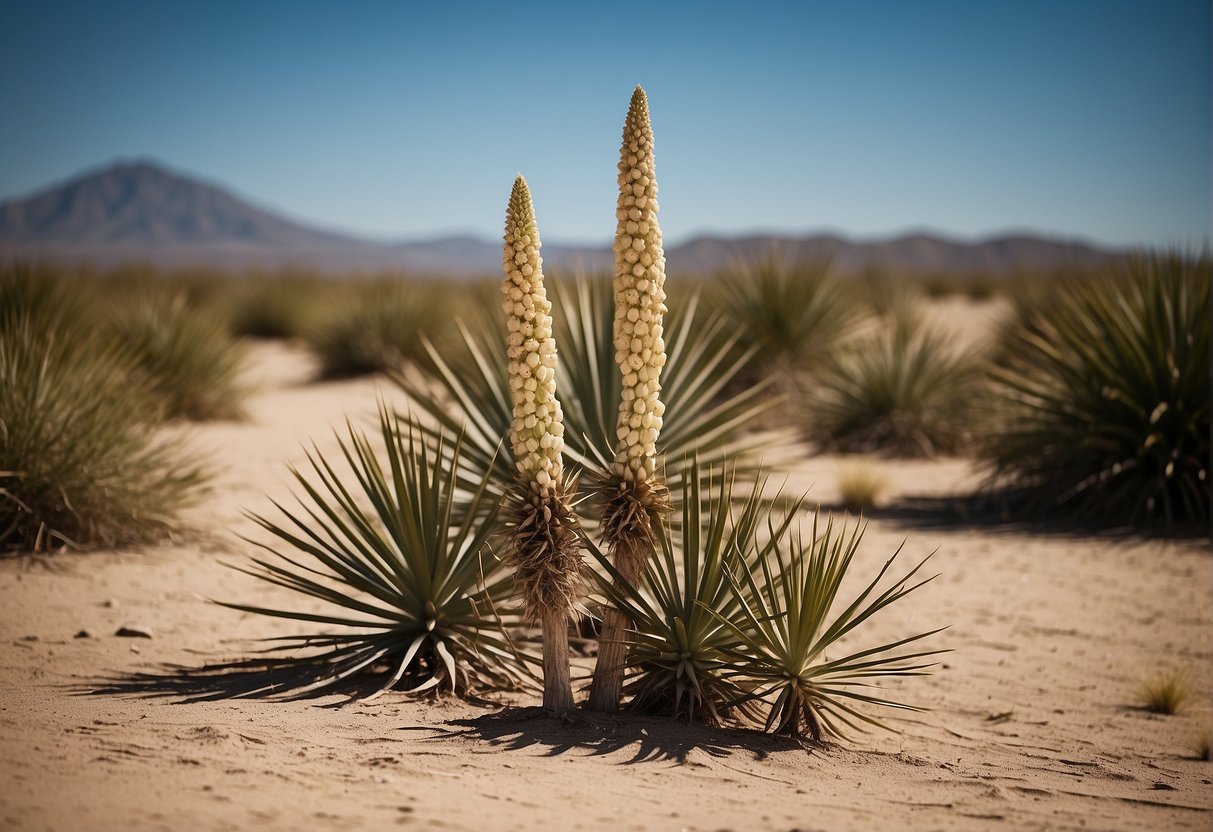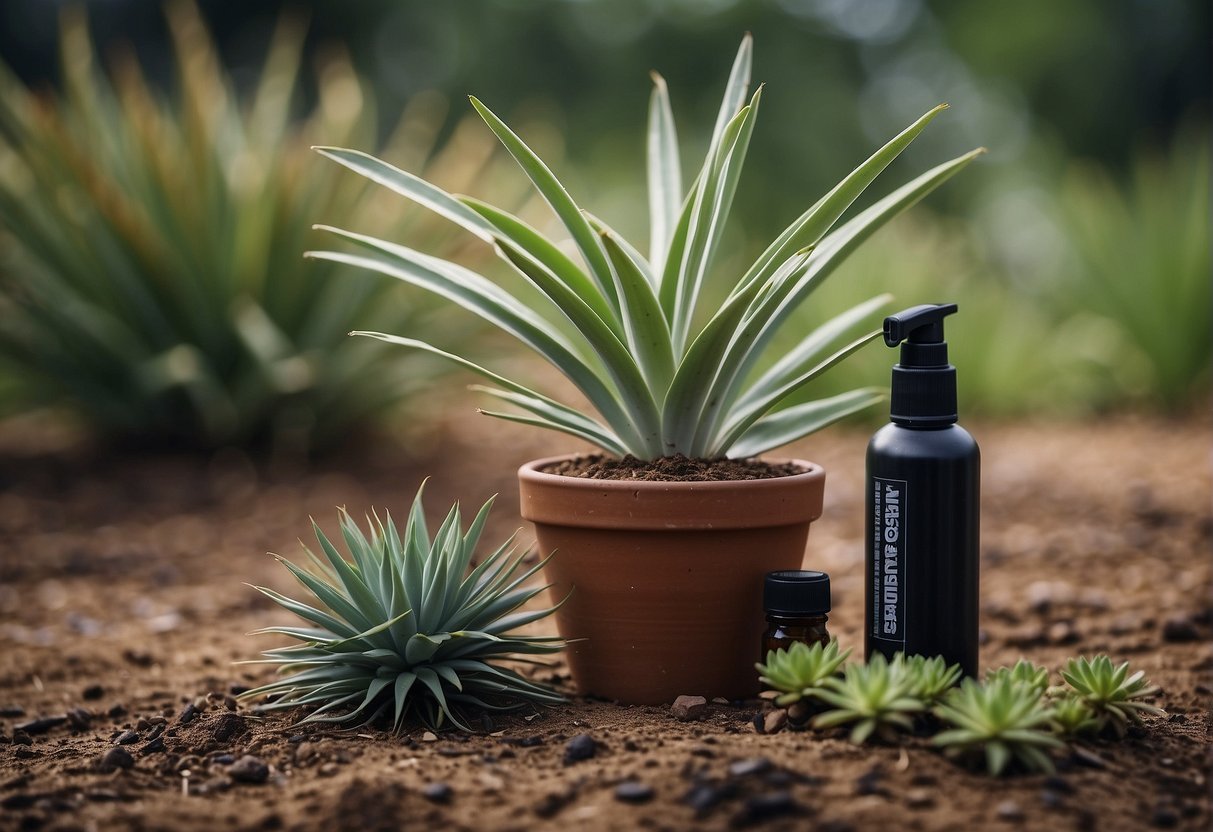What Causes Black Spots on Yucca Plants: Common Reasons and Solutions
Should you discover black markings on your yucca plant, rest assured you are in good company. Numerous elements, from environmental influences to care practices, can trigger these blemishes. This article aims to examine the typical reasons behind black spots on yucca plants while offering guidance on how to treat and prevent them.

Environmental factors, such as temperature and humidity, can play a role in the development of black spots on yucca plants. Additionally, cultural factors, such as overwatering or improper soil drainage, can also contribute to the problem. By understanding the underlying causes of black spots, you can take steps to address the issue and keep your yucca plants healthy.
If you’re dealing with black spots on your yucca plants, don’t worry. With a little bit of knowledge and effort, you can get your plants back on track. In the following sections, we’ll explore some of the most common causes of black spots and provide some tips for treatment and prevention.
Common Causes of Black Spots on Yucca Plants
If you have noticed black spots on your yucca plants, it is likely due to one of the following common causes: fungal diseases and infections, bacterial infections, or pest infestations.
Fungal Diseases and Infections
Fungal infections are one of the most common causes of black spots on yucca plants. These infections can be caused by a variety of fungi, such as Cercospora, which causes leaf spot, or Cylindrosporium and Coniothyrium, which can cause black spots on leaves and stems.
Fungi reproduce through spores, which can easily spread from plant to plant. If you notice black spots on your yucca plant, it is important to remove any infected leaves or stems and dispose of them properly. You can also treat the plant with a fungicide to prevent further spread of the infection.
Bacterial Infections
Bacterial infections can also cause black spots on yucca plants, particularly bacterial leaf spot. This infection is caused by the Xanthomonas campestris bacteria and can be identified by the appearance of black spots on the leaves.
Bacterial infections can spread quickly and can be difficult to treat. If you suspect your yucca plant has a bacterial infection, it is important to remove any infected leaves or stems and dispose of them properly. You can also treat the plant with a bactericide to prevent further spread of the infection.
Pest Infestations
Pest infestations can also cause black spots on yucca plants. Scale insects, yucca plant bugs, aphids, spider mites, and mealybugs are all common pests that can infest yucca plants and cause black spots on the leaves.
If you notice black spots on your yucca plant and suspect a pest infestation, it is important to identify the pest and treat the plant accordingly. You can use insecticidal soap or neem oil to treat most pests, but for severe infestations, you may need to consult a professional.
Environmental and Cultural Factors

Yucca plants are generally hardy and easy to care for, but they can develop black spots due to various environmental and cultural factors. In this section, we will explore some of the most common causes of black spots on yucca plants.
Watering Issues
One of the most common causes of black spots on yucca plants is overwatering. Yuccas prefer well-drained soil, and if they are watered too frequently or if the soil does not drain properly, the roots can become waterlogged and begin to rot. Overhead watering can also contribute to the development of black spots, as it can cause water to collect in the crevices of the leaves and lead to fungal growth.
To prevent black spots caused by watering issues, it is important to use well-draining soil and to water yuccas sparingly, allowing the soil to dry out slightly between waterings. If possible, water at the base of the plant rather than from above, and avoid getting water on the leaves.
Soil and Drainage Problems
In addition to overwatering, poor soil quality and drainage problems can also contribute to the development of black spots on yucca plants. Yuccas prefer a well-draining soil that is not too rich in nutrients. If the soil is too heavy or does not drain properly, the roots can become waterlogged and begin to rot.
To prevent black spots caused by soil and drainage problems, it is important to use a well-draining soil mix that is specifically formulated for cacti and succulents. You can also add sand or perlite to the soil to improve drainage.
Inadequate Light and Air Circulation
Yuccas require plenty of sunlight and good air circulation to thrive. If they are grown in low-light conditions or in an area with poor air circulation, they can become stressed and more susceptible to fungal infections, which can lead to the development of black spots.
To prevent black spots caused by inadequate light and air circulation, it is important to ensure that your yucca plant is placed in a bright, sunny location and that there is good air flow around the plant. You can also prune the plant occasionally to promote better air circulation.
In conclusion, black spots on yucca plants can be caused by a variety of environmental and cultural factors, including overwatering, poor soil quality, and inadequate light and air circulation. By addressing these issues and providing your yucca plant with the proper care, you can help prevent the development of black spots and keep your plant healthy and thriving.
Treatment and Prevention Strategies

If your yucca plant is showing signs of black spots, it’s important to take action to prevent further damage. Here are some effective treatment and prevention strategies to consider:
Effective Fungicides and Bactericides
One of the most effective ways to treat black spots on yucca plants is through the use of fungicides and bactericides. Copper-based fungicides are particularly effective at treating fungal infections, while bactericides can help to control bacterial infections. Neem oil is another natural option that can help to prevent the spread of black spots.
Pest Control Methods
Insects can also contribute to the development of black spots on yucca plants. Consider using insecticides or pest sprays to control common pests like spider mites and mealybugs. Horticultural soap, dish soap, or insecticidal soap can also be effective at controlling pests.
Proper Plant Care
Proper plant care is essential for preventing the development of black spots on yucca plants. Regular pruning can help to remove infected leaves and prevent the spread of disease. Fertilization can also help to keep plants healthy and resistant to disease. Make sure to water your yucca plant properly, avoiding overwatering or underwatering, as this can contribute to the development of black spots.
By following these treatment and prevention strategies, you can help to keep your yucca plant healthy and free from black spots. Remember to always read and follow the instructions on any products you use, and consult with a professional if you are unsure about how to proceed.
Frequently Asked Questions
How can you treat leaf spot diseases on yucca plants?
Leaf spot diseases on yucca plants can be treated by removing the infected leaves and disposing of them properly. You can also apply a fungicide to the remaining leaves to prevent the disease from spreading. Make sure to follow the instructions on the fungicide label and continue to monitor the plant for any signs of recurrence.
What are the signs of pest infestation in yucca plants?
Signs of pest infestation in yucca plants include yellowing or wilting leaves, distorted growth, and the presence of insects on the plant. Common pests that attack yucca plants include spider mites, mealybugs, and scale insects. You can control these pests by using insecticidal soap or neem oil.
How do you identify and manage fungal infections on yucca plants?
Fungal infections on yucca plants can be identified by the presence of black or brown spots on the leaves, as well as yellowing or wilting of the plant. To manage fungal infections, you should remove the infected leaves and dispose of them properly. You can also apply a fungicide to the remaining leaves to prevent the disease from spreading.
What are the symptoms of an overwatered yucca plant?
Symptoms of an overwatered yucca plant include yellowing or wilting leaves, mushy or rotten roots, and a foul smell coming from the soil. To prevent overwatering, make sure to allow the soil to dry out between waterings and avoid watering too frequently.
Why are my yucca plant leaves developing brown spots?
Yucca plant leaves can develop brown spots due to a variety of reasons, including fungal infections, pest infestations, and overwatering. It is important to identify the underlying cause of the brown spots and take appropriate measures to treat the problem.
What is the best fungicide to use for yucca plant diseases?
The best fungicide to use for yucca plant diseases depends on the specific type of fungus that is affecting the plant. Some common fungicides that can be used on yucca plants include copper-based fungicides, sulfur-based fungicides, and neem oil. Make sure to follow the instructions on the fungicide label and apply it as directed.


